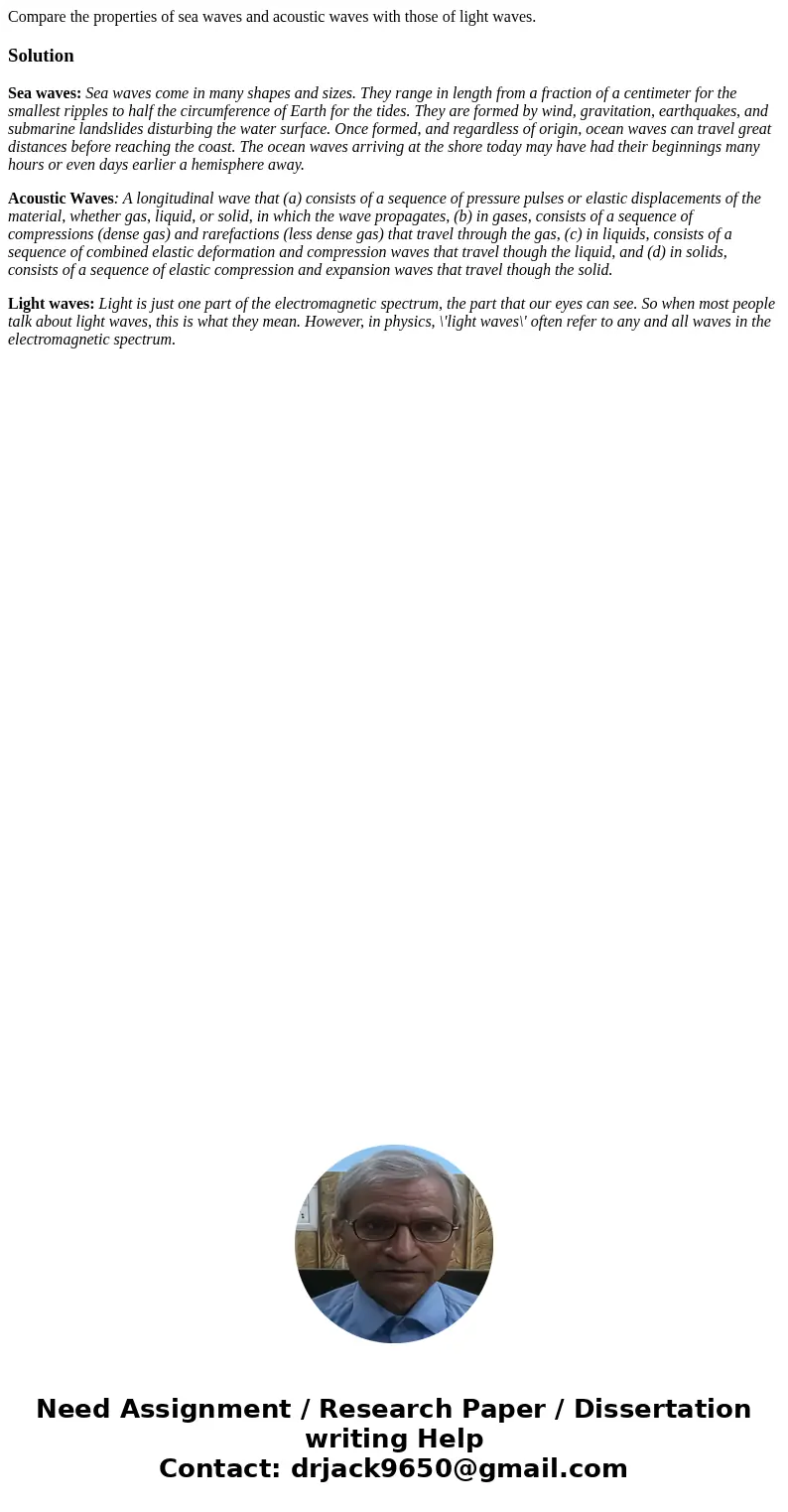Compare the properties of sea waves and acoustic waves with
Solution
Sea waves: Sea waves come in many shapes and sizes. They range in length from a fraction of a centimeter for the smallest ripples to half the circumference of Earth for the tides. They are formed by wind, gravitation, earthquakes, and submarine landslides disturbing the water surface. Once formed, and regardless of origin, ocean waves can travel great distances before reaching the coast. The ocean waves arriving at the shore today may have had their beginnings many hours or even days earlier a hemisphere away.
Acoustic Waves: A longitudinal wave that (a) consists of a sequence of pressure pulses or elastic displacements of the material, whether gas, liquid, or solid, in which the wave propagates, (b) in gases, consists of a sequence of compressions (dense gas) and rarefactions (less dense gas) that travel through the gas, (c) in liquids, consists of a sequence of combined elastic deformation and compression waves that travel though the liquid, and (d) in solids, consists of a sequence of elastic compression and expansion waves that travel though the solid.
Light waves: Light is just one part of the electromagnetic spectrum, the part that our eyes can see. So when most people talk about light waves, this is what they mean. However, in physics, \'light waves\' often refer to any and all waves in the electromagnetic spectrum.

 Homework Sourse
Homework Sourse